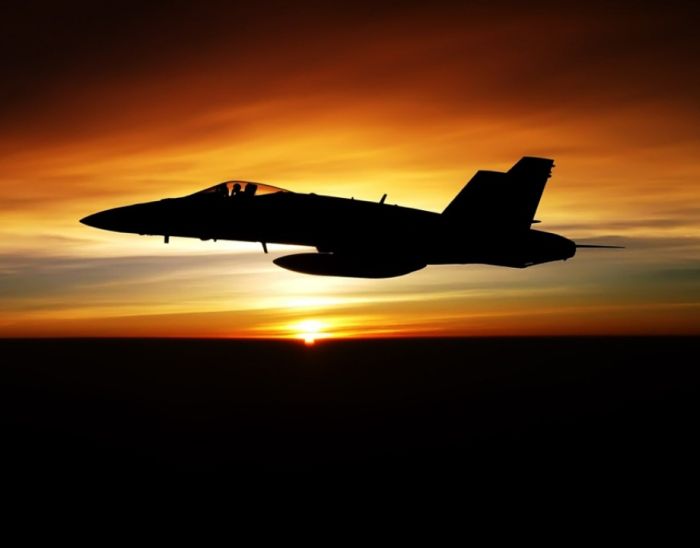|
|
McDonnell Douglas F/A-18 Hornet
|
The F/A-18L version followed to coincide with the US Navy's F/A-18A as a land-based export alternative. This was essentially an F/A-18A lightened by approximately 2,500 pounds (1,130 kg) to 3,000 pounds (1,360 kg); weight was reduced by removing the folding wing and associated actuators, by implementing a simpler landing gear (single wheel nose gear and cantilever oleo main gear), and change to a land-based tail-hook. The revised F/A-18L included wing fuel tanks and fuselage stations of the F/A-18A. Its weapons capacity would increase from 13,700 pounds (6,210 kg) to 20,000 pounds (9,070 kg); largely due to the addition of a third underwing pylon and strengthened wingtips (11 stations in total vs 9 stations of the F/A-18A). Compared to the F-18L, the outboard weapons pylons are moved closer to the wingtip missile rails. Because of the strengthened non-folding wing, the wingtip missile rails were designed to carry either the AIM-7 Sparrow or Skyflash medium-range air-to-air missiles, in addition to the AIM-9 Sidewinder as found on the F/A-18A. The F/A-18L was strengthened for a 9 g design load factor compared to the F/A-18A's 7.5 g factor.
The partnership between McDonnell Douglas and Northrop soured over competition for foreign sales for the two models. Northrop felt that McDonnell Douglas would put the F/A-18 in direct competition with the F-18L. In October 1979, Northrop filed a series of lawsuits charging that McDonnell was using Northrop technology developed for the F-18L for foreign sales in violation of their agreement, and asked for a moratorium on foreign sales of the Hornet via McDonnell Douglas. The case was resolved in 1985 when McDonnell agreed to pay Northrop $50 million for complete rights to the design, with no admission of wrongdoing. By then Northrop had ceased work on the F-18L, and most export orders were captured by the F-16 or the F/A-18.
• Into production
During flight testing, the snag on the leading edge of the stabilators was filled in, and the gap between the Leading edge extensions (LEX) and the fuselage mostly filled in. The gaps, called the boundary layer air discharge (BLAD) slots, controlled the vortices generated by the LEX and presented clean air to the vertical stabilizers at high angles of attack, but they also generated a great deal of parasitic drag, worsening the problem of the F/A-18's inadequate range. McDonnell filled in 80% of the gap, leaving a small slot to bleed air from the engine intake. This may have contributed to early problems with fatigue cracks appearing on the vertical stabilizers due to extreme aerodynamic loads, resulting in a short grounding in 1984 until the stabilizers were strengthened. Starting in May 1988, a small vertical fence was added to the top of each LEX to broaden the vortices and direct them away from the vertical stabilizers. This also provided a minor increase in controllability as a side effect. F/A-18s of early versions had a problem with insufficient rate of roll, exacerbated by the insufficient wing stiffness, especially with heavy underwing ordnance loads.
|
|









